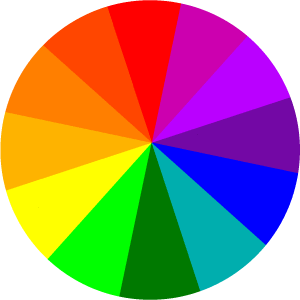Line: The linear marks made with a pen or brush or the edge created when two shapes meet.
Shape: A self contained defined area of geometric or organic form. A positive shape in a painting automatically creates a negative shape.
Direction: All lines have direction – Horizontal, vertical or oblique.
Size: Simply the relationship of the area occupied by one shape to that of another.
Texture: The surface quality of a shape – Rough, smooth, soft, hard, glossy etc. Texture can be physical or visual.
Color: Also called Hue.
Value: The lightness or darkness of a color. Value is also called tone.
Balance: Similar to balance in physics. A large shape close to the center can be balanced with a small shape close to the edge. A large light toned shape will be balanced by a small dark toned shape.
Gradation: Color from warm to cool and tone from dark to light produce aerial perspective.
Repetition: Repeating an image with some variation.
Contrast: The juxtaposition of opposing elements. Ex: red/blue, light/dark, and horizontal/vertical.
Harmony: Visually satisfying effect of combining similar, related elements.
Dominance: Gives a painting intrest, counteracting confusion and monotony.
Unity: Relating the design elements to the idea being expressed in a painting reinforces the principal of unity.












